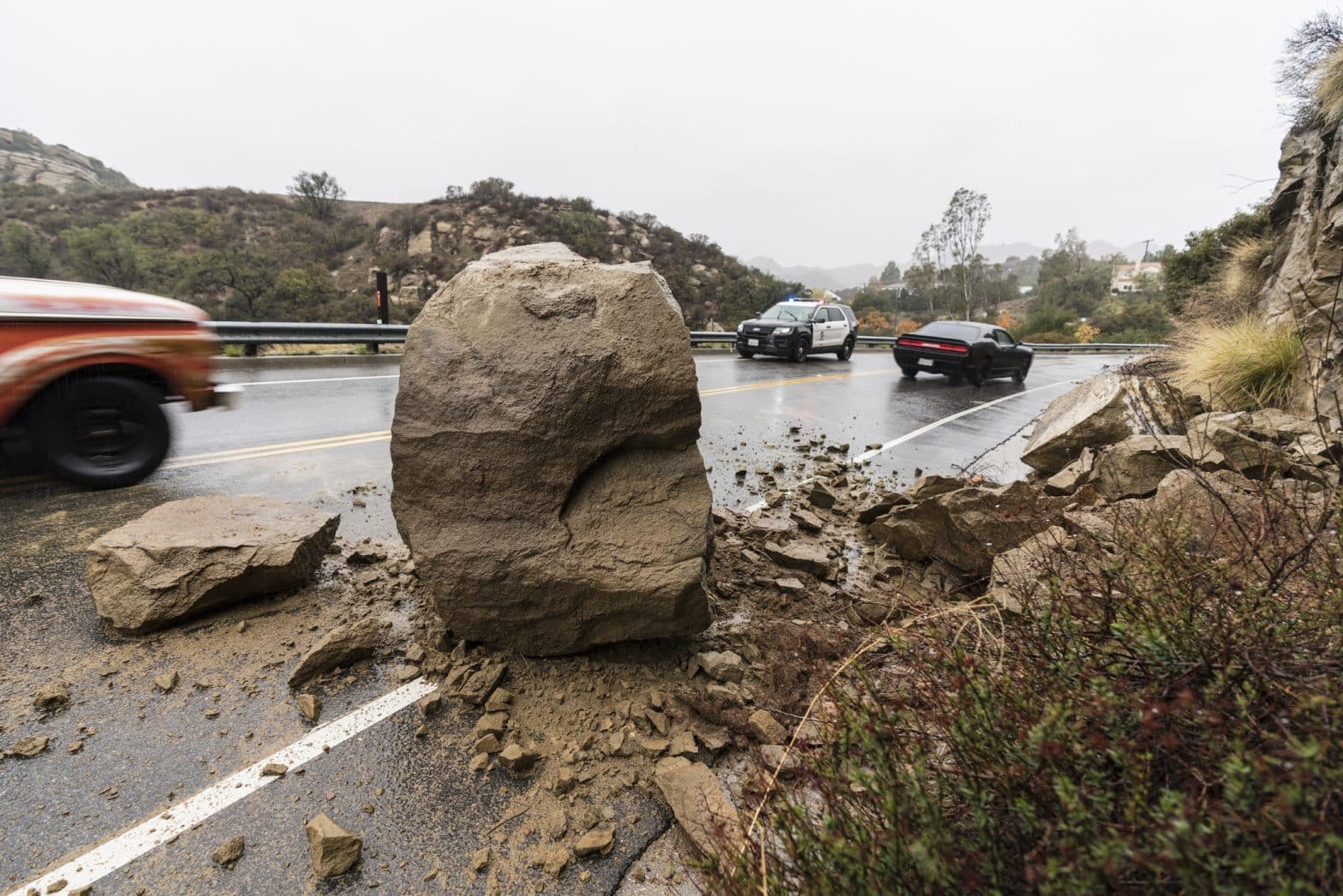A turbocharged atmospheric river continued to lash Los Angeles early Tuesday, where officials warned further rainfall on already saturated ground would trigger more dangerous mudslides and flash flooding.
Torrential rains that had battered swaths of Southern California a day earlier were expected to ease off slightly Tuesday and Wednesday before another heavy deluge on Thursday, the National Weather Service said.
“We’ve seen a lot of rain overnight across the whole region, and it continues to fall,” Bob Oravec, a meteorologist at the NWS, said Tuesday. “Following the terrible flooding we’ve already seen and with the ground totally saturated any more rain is going to cause real problems.”
More than 11 inches of rain have fallen in some places since Sunday, Oravec said, with parts of downtown L.A. receiving up to 9 inches.
The storm poured 2.9 inches of rain on Downtown Los Angeles on Monday, breaking the daily record of 2.3 inches of rain set in 1901, according to the NWS. The 7 inches of rain for Sunday and Monday made it the highest two-day rainfall total for the month of February, surpassing the previous record of 6 inches, set in 1913.
The storm was fueled, weather experts say, by an El Niño condition that warms the Eastern Pacific and often results in heavier rainfall in the southwestern part of the U.S.
At least 120 mudslides and dozens of damaged structures were reported across L.A. on Monday, local officials said.
The Los Angeles Fire Department said evacuations had been enforced in several areas after homes were hit by mudslides and debris flows. Flash-flood warnings were in place early Tuesday from Thousand Oaks and Malibu to Santa Monica, West Hollywood and Beverly Hills, the weather service said.
The LAFD responded to 130 flooding incidents, Kristin Crowley, the city’s fire chief said Monday. Fire crews also made several water rescues for stranded motorists, she said.
Firefighters also evacuated 16 residents from nine homes in the Los Angeles neighborhood of Studio City, located near the Hollywood Hills, after a mudslide hit the area, Crowley said. No one was injured in the incident, she said.
Many Southern California homes are exposed to mudslides because neighborhoods have been built below hillsides that are vulnerable to forest fires that leave less vegetation to hold the soil, said Andy Gray, associate professor of watershed hydrology at the University of California, Riverside. “When those areas burn, that’s when they are prone to producing runoff of debris flow,” Gray said.
The storm barreled across the nation’s most populous state, leaving more than half a million customers without power Monday, according to PowerOutage.us. More than 150,000 customers were still without power across California at 6 a.m. local time Tuesday.
The atmospheric storms also battered Northern California. A redwood tree fell and killed a man in Yuba City, located about 50 miles north of Sacramento, local law-enforcement officials said. The man may have been trying to clear the tree away from his home, police said.
While the south of the state took the brunt of the storm, hurricane-force winds also lashed the San Francisco Bay Area, toppling trees and knocking out power.













